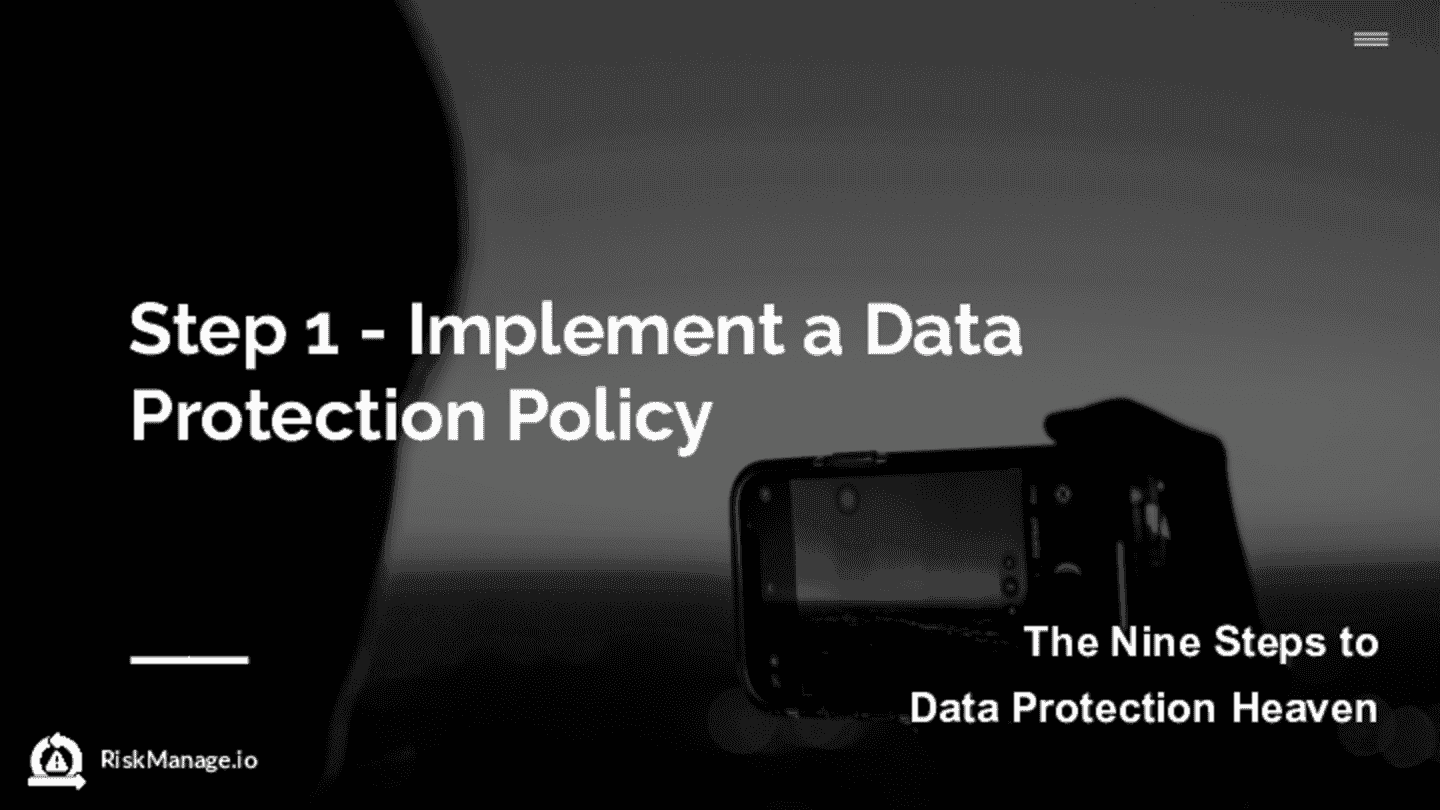The 9 Steps to DPA Heaven : Step1 - Implementing a Data Protection Policy
A roadmap to effectively safeguard personal data, ensure regulatory compliance, and build lasting trust with stakeholders.
Introduction and Step1: Implementing a Data Protection Policy
Welcome to The Nine Steps to Data Protection Heaven, our latest piece providing insights on data & risk management. Today we're going to embark on a journey to a place we like to call 'Data Protection Heaven'.
So, how does one reach this great place? The answer lies in this simple to follow nine-step process. This process acts as your roadmap, guiding you through the intricate landscape of data protection requirements, ensuring your organisation remains in compliance with legislative mandates and shielding your valuable data assets.
In this guide, we'll explore each step of this process in detail. From the outset, where we lay the groundwork with a robust data protection policy, right through to the crucial phase of appropriately responding to data breaches.
And who is this roadmap designed for? It's for anyone within an organisation who works with personal data. It's not exclusively for the Data Protection Officers or IT specialists out there; it's a useful guide for all. By the time we complete our journey, you'll be armed with a straightforward plan, to help you to effectively meet your Data Protection obligations.
Links
- You can listen to this Step 1 as a podcast here, or
- the complete audio (parts1-9) here.
- The complete article is available here.
- If you have missed any part or would like to start from the beginning, you can find links to all sections at the bottom of this article.
A roadmap to effectively safeguard personal data, ensure regulatory compliance, and build lasting trust with stakeholders.
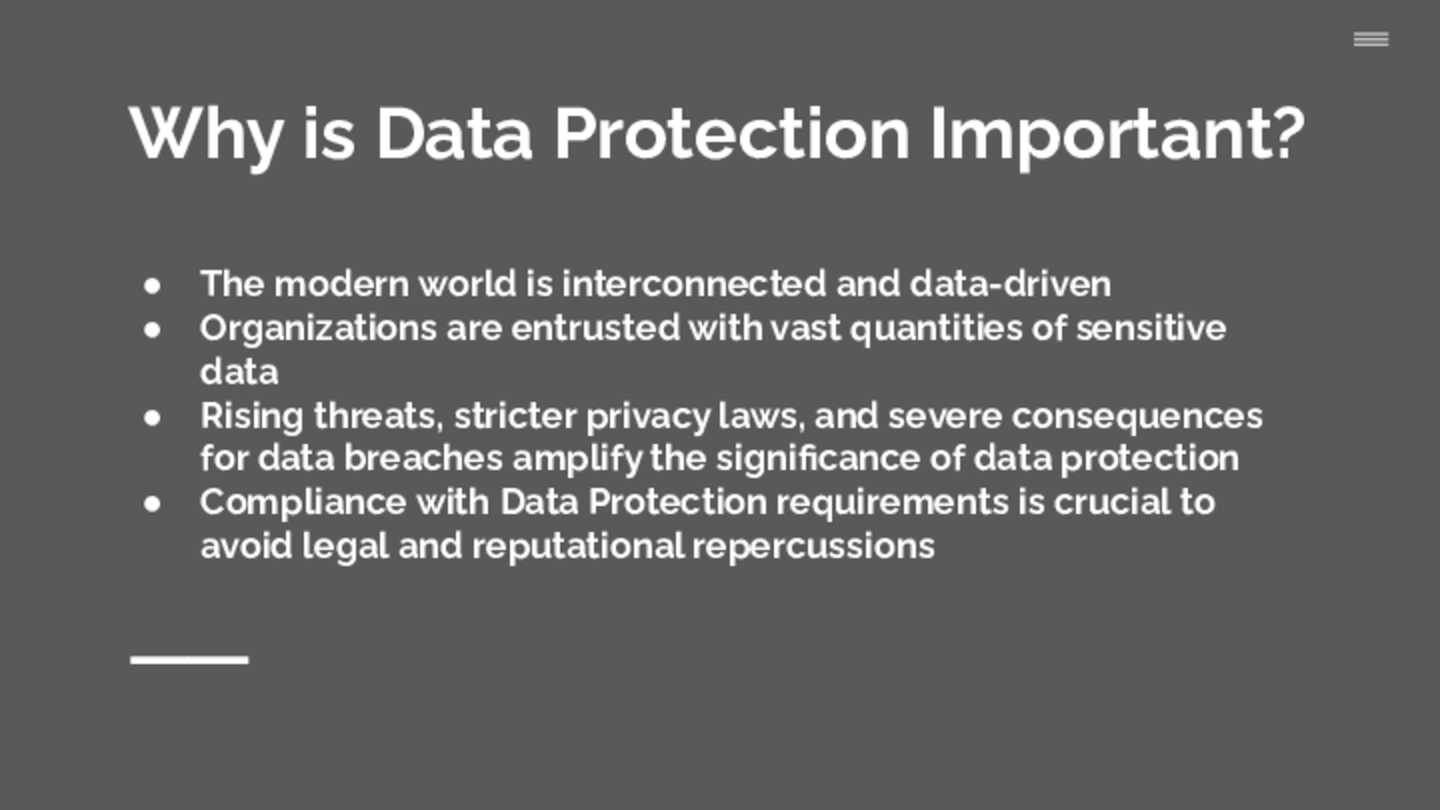
In the interconnected, data-driven landscape of our modern world, a solid data protection strategy is not just an option – it's an absolute necessity. Organisations are entrusted with vast quantities of sensitive data, and with this comes an imperative to handle this data with utmost care and precision. The significance of data protection has only been amplified by rising threats, stricter privacy laws, and increasingly severe consequences for data breaches. The need to be in line with Data Protection requirements is paramount, with both legal and reputational repercussions at stake.
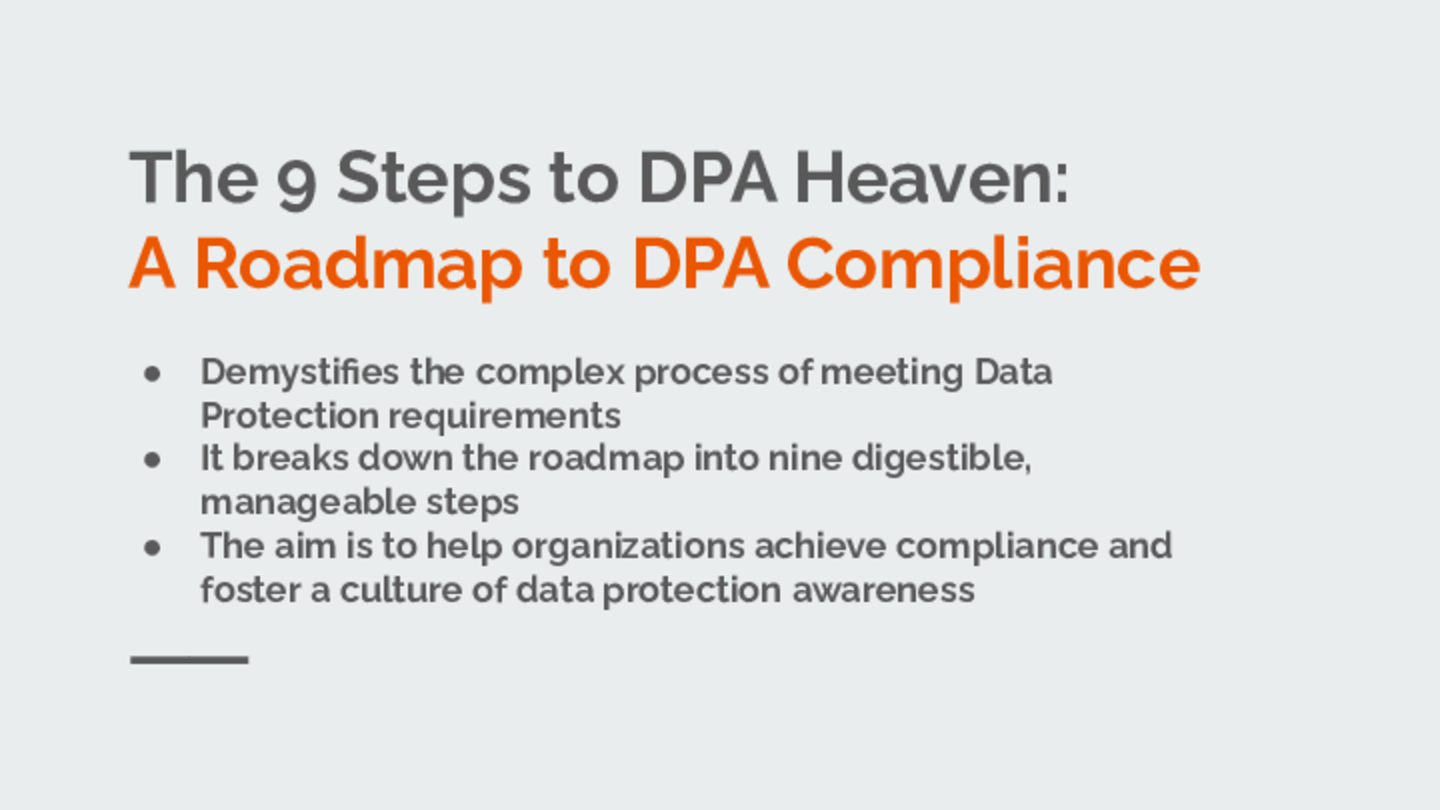
This is why we've developed The Data Protection Process: The 9 Steps to DPA Heaven," a comprehensive and user-friendly guide that demystifies the process of meeting Data Protection requirements. This guide breaks down the complex roadmap into nine digestible, manageable steps to help organisations not only achieve compliance but also foster a culture of data protection awareness.
Starting with the fundamental step of implementing a data protection policy, this guide moves through carrying out a data protection impact assessment, appointing a Data Protection Officer, and ensuring that staff members are well-versed in their obligations. The journey continues with the specifics of obtaining valid consent for processing data, updating privacy notices, implementing technical safeguards, responding to subject access requests, and finally, reporting any security breaches.
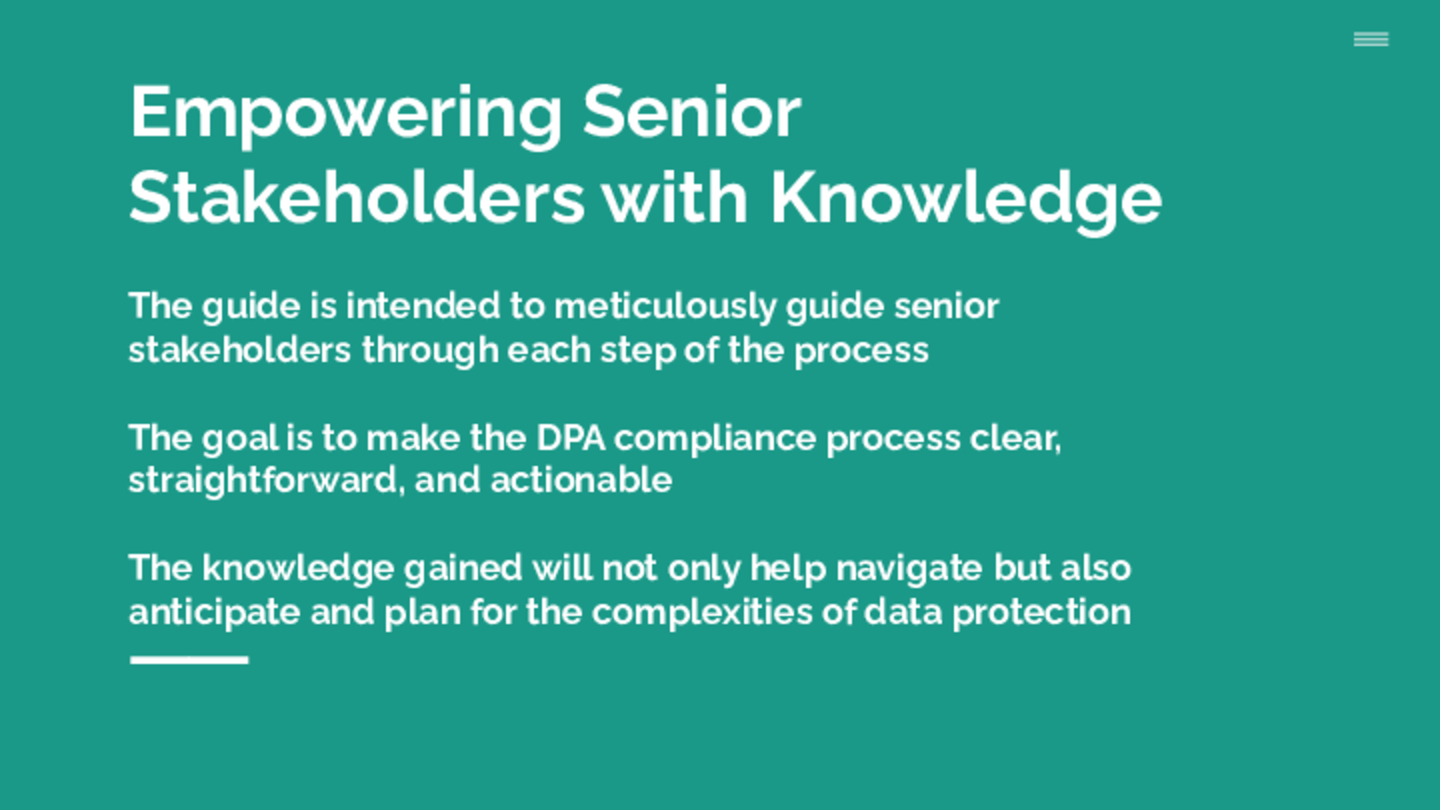
In this article, we will meticulously guide you, the senior stakeholders, through each of these steps. Our goal is to make the DPA compliance process clear, straightforward, and actionable. We aim to empower you with the knowledge to not only navigate but also anticipate and plan for the complexities of data protection. So, whether you're just beginning your journey to data protection or looking to strengthen your existing measures, let's step onto the path to DPA heaven together.
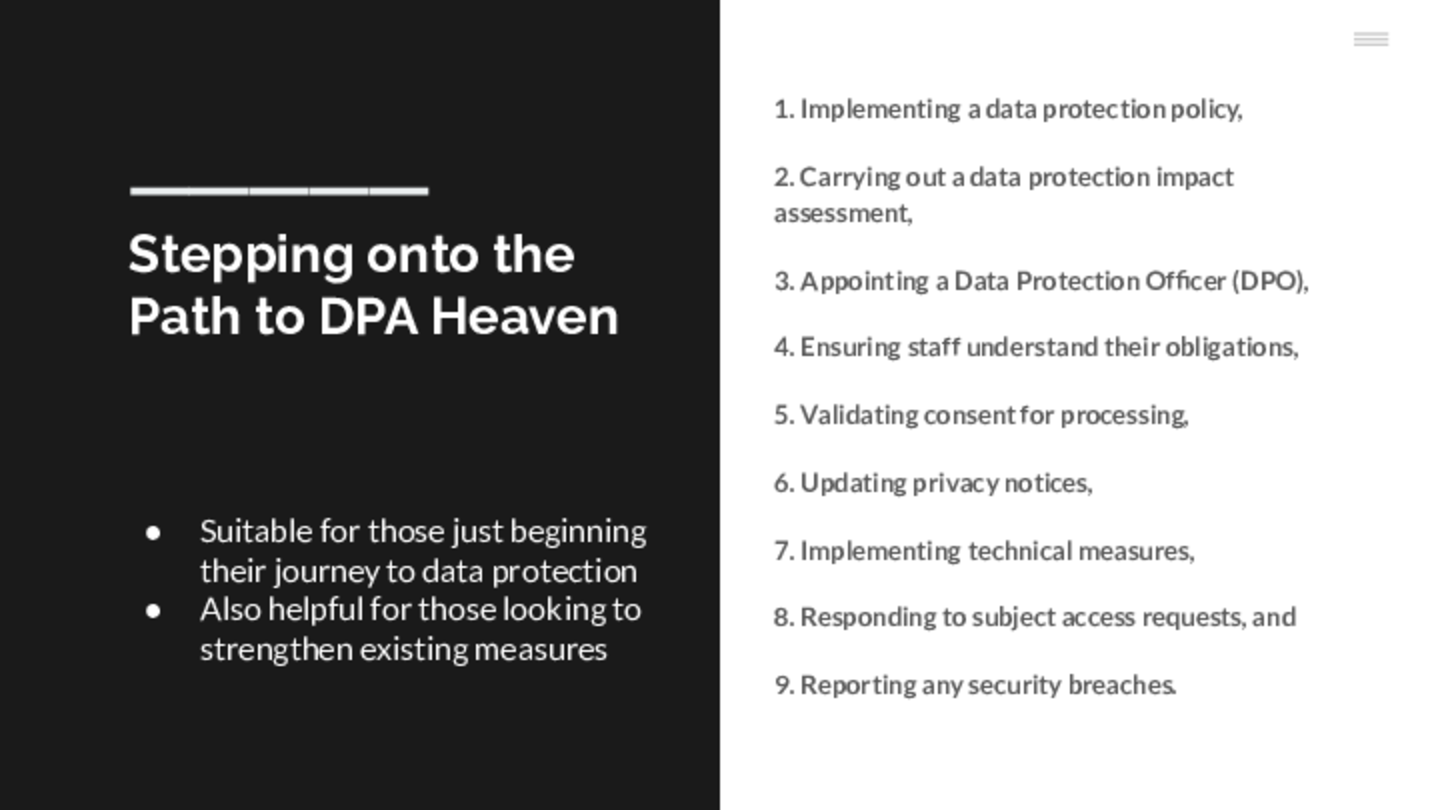
The 9 Steps to Data Protection Heaven
Data protection is an essential part of any organisation's operations, and successfully managing it involves a multi-faceted approach. This approach provides a straightforward, nine-step process, designed to guide you on your journey to full Data Protection compliance.
These steps include:
- Implementing a data protection policy,
- Carrying out a data protection impact assessment,
- Appointing a Data Protection Officer (DPO),
- Ensuring staff understand their obligations,
- Validating consent for processing,
- Updating privacy notices,
- Implementing technical measures,
- Responding to subject access requests, and
- Reporting any security breaches.
By following these steps, you'll navigate the data protection landscape with ease, ensuring your organisation operates within legislative requirements while safeguarding your precious data assets.
BLUF (Bottom Line Up Front)
Here is a summary of the 9-Step process, that you can follow as we walk through each step.
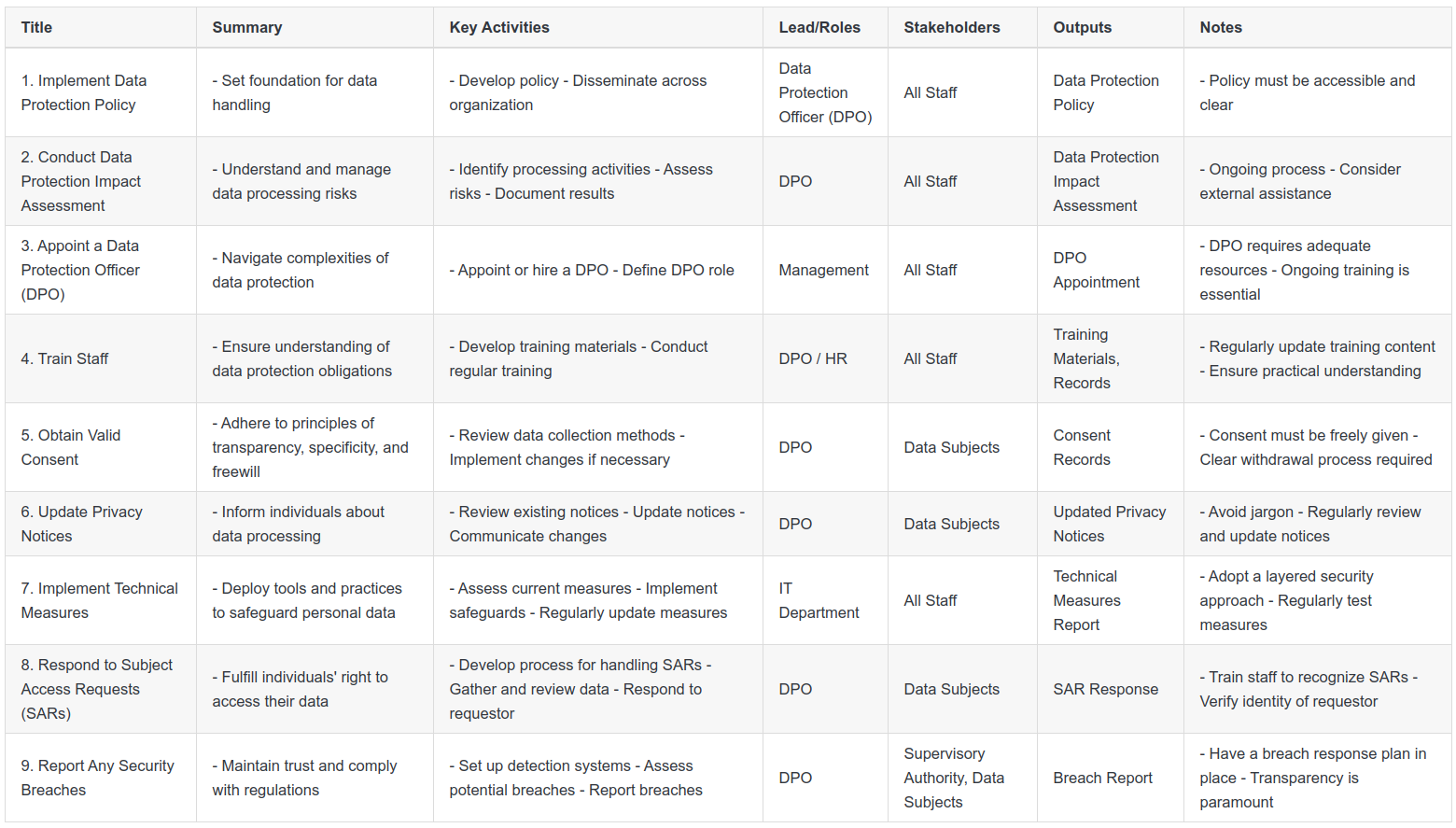
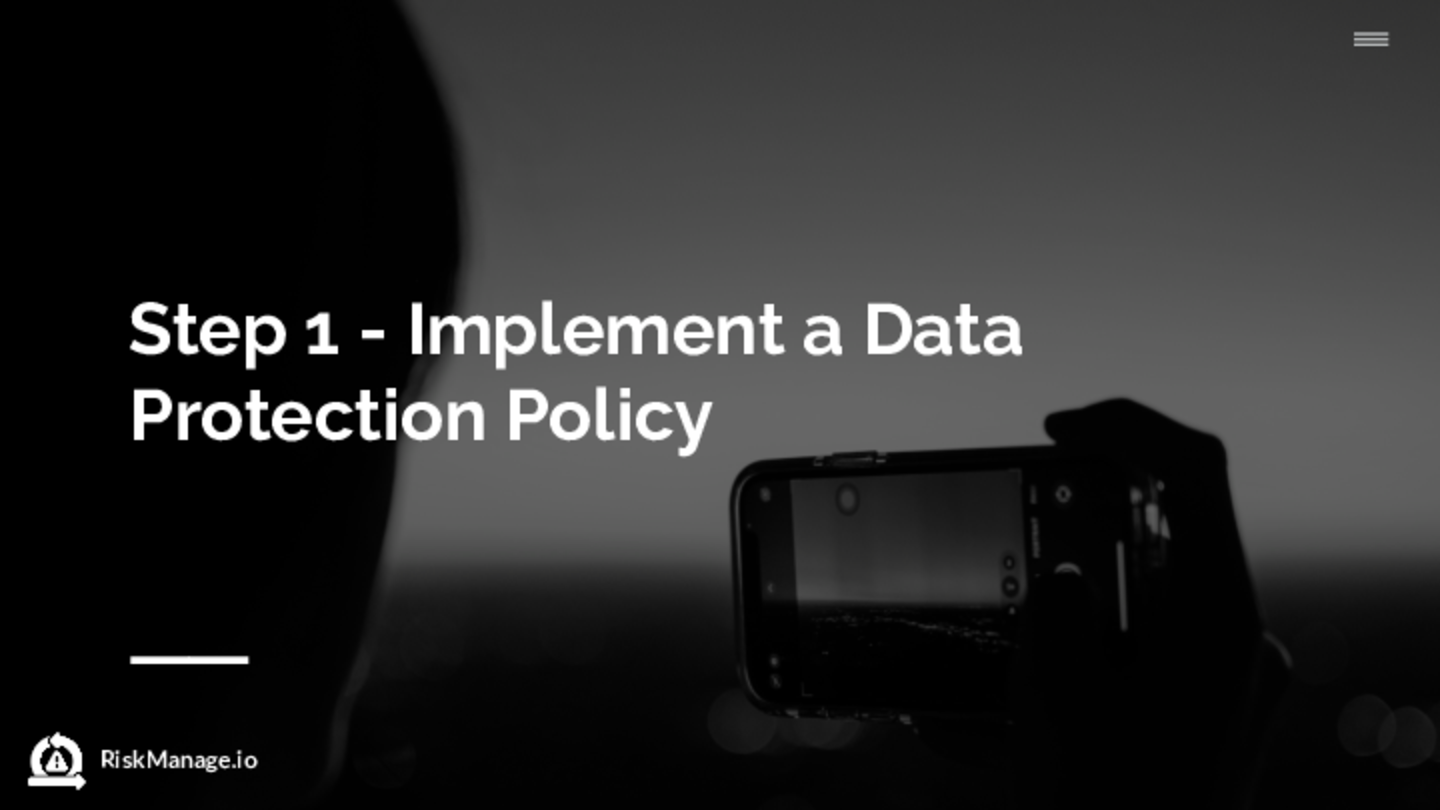
Step 1: Implement a Data Protection Policy
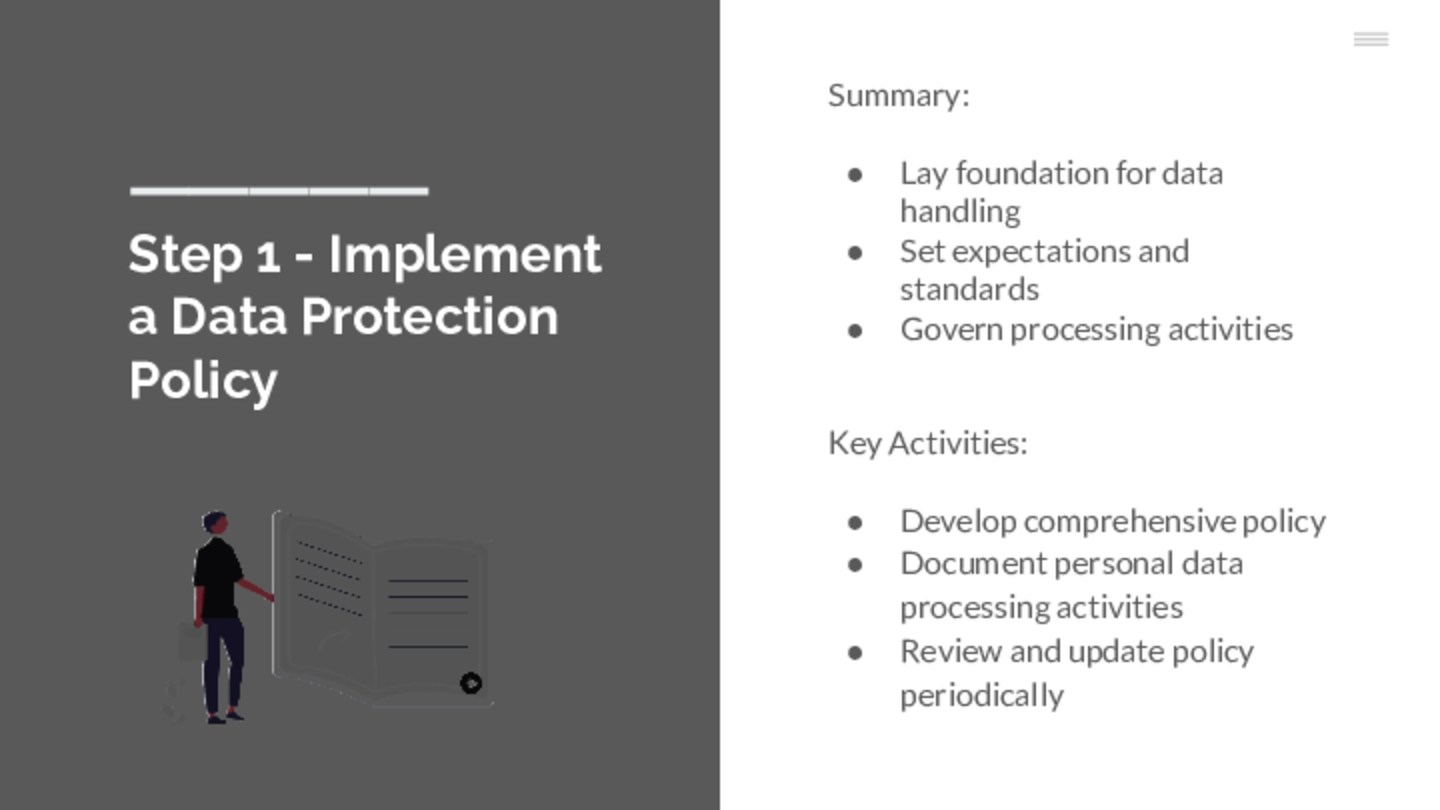
The foundation of any successful data protection strategy starts with the implementation of a clear, comprehensive, and effective data protection policy. This policy acts as a blueprint for how your organisation handles and safeguards personal data, setting out the 'why', 'what', 'how', and 'when' of data processing activities.
Key Activities
The process begins with understanding the types of data your organisation processes, including personal data and sensitive personal data. This should involve a thorough data mapping exercise that identifies where data comes from, where it is stored, how it is processed, who has access to it, and where it goes when it leaves your organisation.
Next, your policy should outline the data protection principles your organisation adheres to, such as lawfulness, fairness, transparency, purpose limitation, data minimisation, accuracy, storage limitation, integrity, and confidentiality.
Furthermore, your policy should articulate clear procedures for data subject rights, data breach response, data protection impact assessments, and the appointment and responsibilities of your Data Protection Officer (DPO).
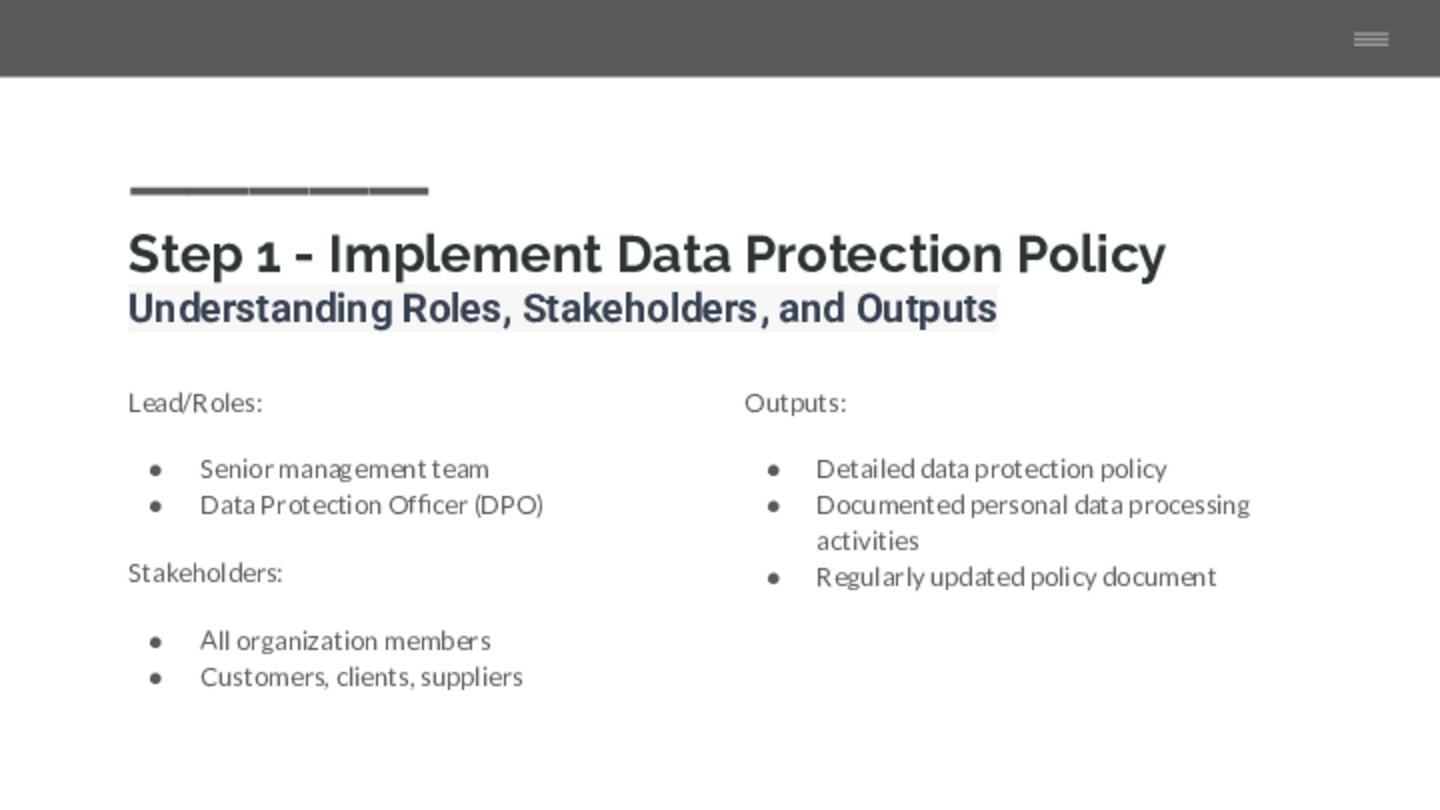
Key Roles and Stakeholder Engagement
Key stakeholders in this process include senior management, who are responsible for endorsing the policy, and the Data Protection Officer (if already appointed), who plays a central role in the development and maintenance of the policy. The policy should be communicated to all employees and relevant third parties to ensure everyone understands their responsibilities.
Outputs
The key output of this step is a well-documented Data Protection Policy that is easily accessible to all stakeholders, both internal (such as employees) and external (like customers or users). This policy should be reviewed and updated regularly, at least annually or whenever there is a significant change in your data processing activities or relevant legislation.
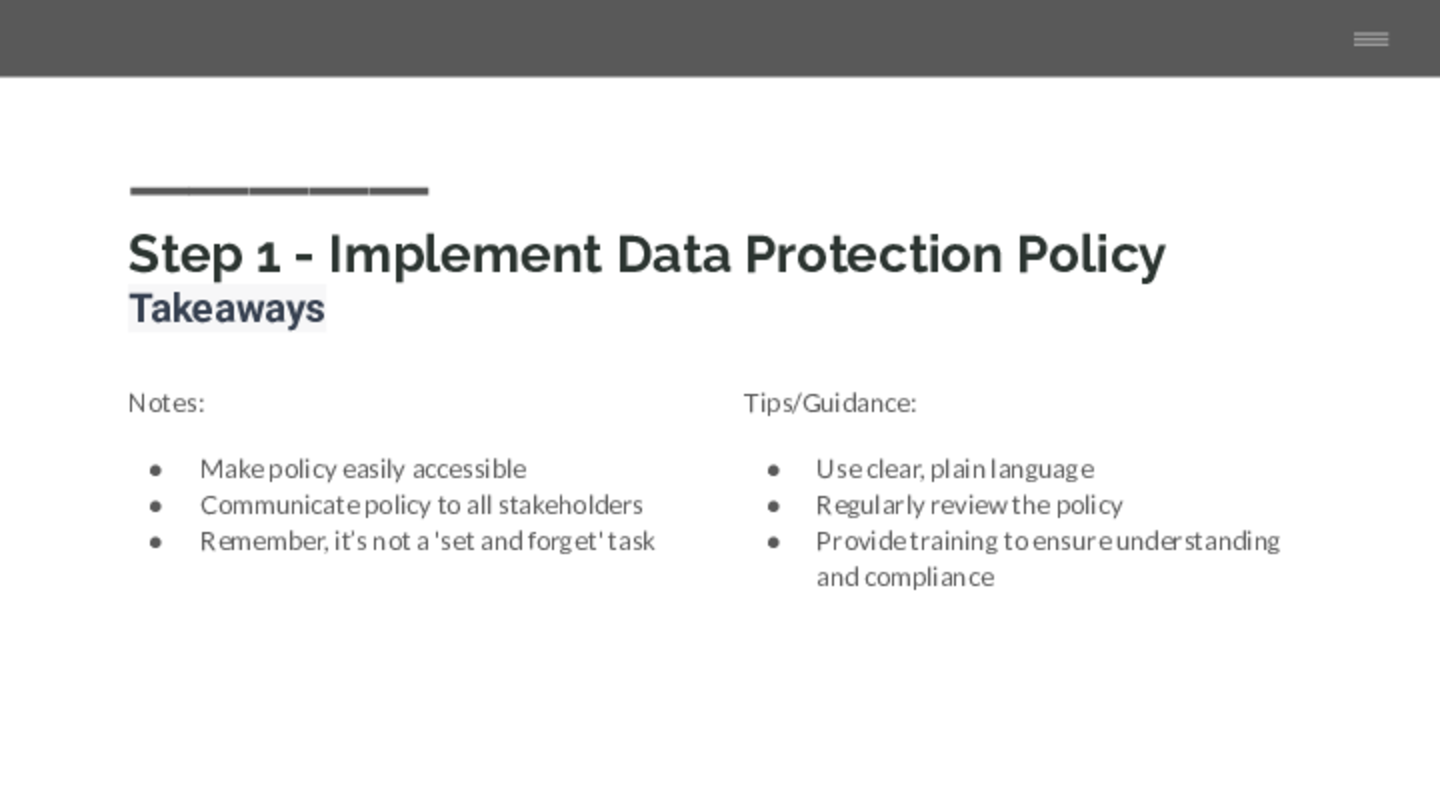
Summary
Remember, a data protection policy is not a one-size-fits-all document. It needs to be tailored to your organisation's specific needs, operations, and data processing activities. Moreover, it's essential to remember that a policy on its own isn't enough – it needs to be backed by actual practices.
A useful tip from our experience is to engage all levels of the organisation during the policy development process. This includes everyone from top-level management to those involved in day-to-day data processing. Doing so ensures that the policy reflects practical realities and is embraced by the whole organisation.
Finally, it's always beneficial to seek external expertise when creating your policy, especially if your organisation processes large amounts of sensitive data. Consulting with data protection specialists can ensure your policy is robust, comprehensive, and compliant with the latest legislative requirements.
In summary, implementing a robust data protection policy is the first and crucial step on your journey to Data Protection Heaven. It sets the tone and direction for your data protection efforts and serves as a constant point of reference for all data-related activities within your organisation."
In Step 2, we will cover the Data Protection Impact Assessment, and why it is an essential part of your data protection toolkit.
Navigation
- The next part, "Step2 : Carrying out a data protection impact assessment" is available here.
- Step 2 Audio podcast available here
- Links to the complete list of audio podcasts for this series are available here: Part 1, Part 2, Part 3, Part 4, Part 5, Part 6, Part 7, Part 8, Part 9, Parts1-9/Complete
- Links to each Section: Step 1, Step 2, Step 3, Step 4, Step 5, Step 6, Step 7, Step 8. Step 9.
If you like this content, find it useful or are looking for further assistance, you can contact us via info@riskmanage.io, webchat or via our website using the links provide.
